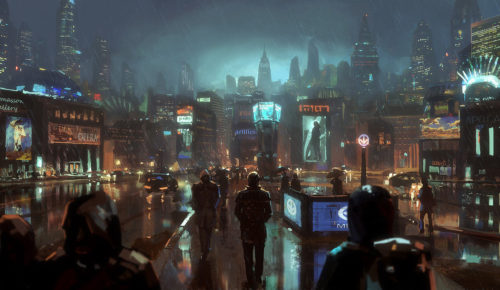
This reading carries on from here.
In this section (c. pages 366-425), Breivik traces some of the reasons for the weakness of the modern West. Although the reasons for the West’s decline are many, some weigh more heavily than others.
Curiously, from the perspective of 2017, the document points out that in the absence of a meaningful life people will gravitate towards mindless destruction. In this sense, the document appears to be somewhat prescient.
Breivik laments a lack of order and structure in the modern West. Society, he claims, has essentially broken down. Nobody wants to have children any more because they want to live carefree lives of perpetual adolescence. The plummeting birthrates have led to a demand from many quarters for mass immigration to replace the non-existent native children.
And so, conflict between the natives and immigrants becomes ever more likely, following the maxim “demography is destiny”.
Not that mass immigration is proposed merely for economic reasons. Breivik details a large conspiracy on the part of European elites to radically transform the make-up of their nations, especially in Britain under Tony Blair. Interestingly, Breivik is willing to criticise big business for their complicity in mass immigration – something that few on the right are willing to dare.
Perhaps unavoidably for a document of this length, the rhetoric swings from entirely reasonable libertarian critiques of Marxism to unreasonable demands, such as the total banning of the discipline of sociology. Sociology is inherently untrustworthy: “Their academic weapons are to deliberate spread their falsified and corrupted Marxist world view.”
Breivik makes an accurate criticism when he points out that the advocates of cultural Marxism are seldom the black, poor or disabled people that the Marxists claim to be agitating on behalf of. Instead, the vast majority of Marxists in the West are from privileged, wealthy families.
When Breivik writes that “Cultural Marxists tend to hate anything that has an image of being strong, good and successful” he agrees with some of the columnists of this newspaper, who have previously written about the overlap between modern leftist thought and slave morality, in particular the feeling of resentment that induces the weak to oppose anything strong.
This tendency is also equated with the feminine, with masochism and with suicidal ideation.
He also echoes this newspaper when he quotes a British politician as saying “When all the politicians agree, the rest of us should suspect a plot against the ordinary citizen.” Like this newspaper, the intent in raising such paranoid conjectures is to crystallise dissent against the system.
Breivik makes no effort to hide his dissatisfaction with the political process. Electoral politics is dismissed as an “empty ritual” directed by the collusion of the political and media classes. Important issues are not discussed by the media, who has failed to do its job as a Fourth Estate holding the government to account. Instead, they are decided upon “behind closed doors”.
In this section, Breivik manages to list who his enemies are. In short, his three major groups of enemies to the European people are:
1. The media and academia, who have an anti-Western bias
2. The political elites, who seek to remake the world in their image regardless of the cost, and
3. Muslims.



